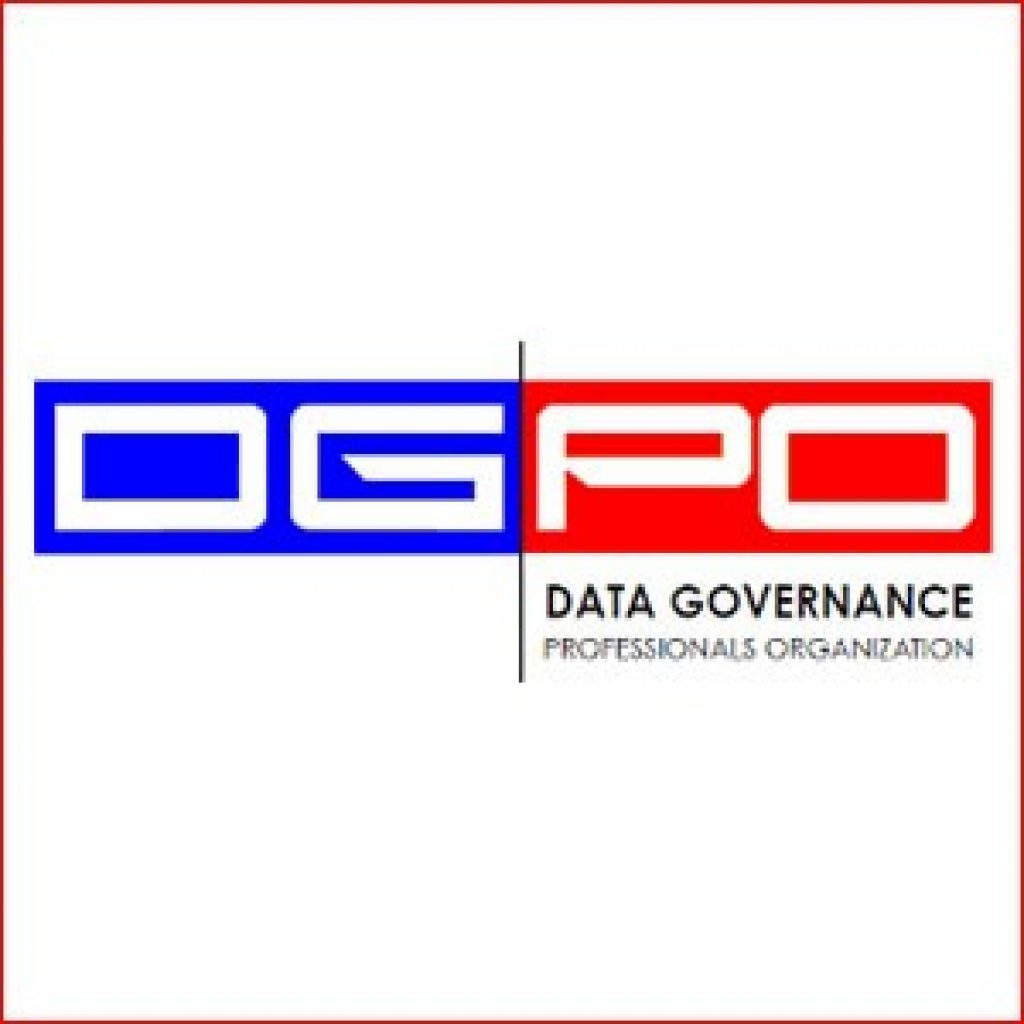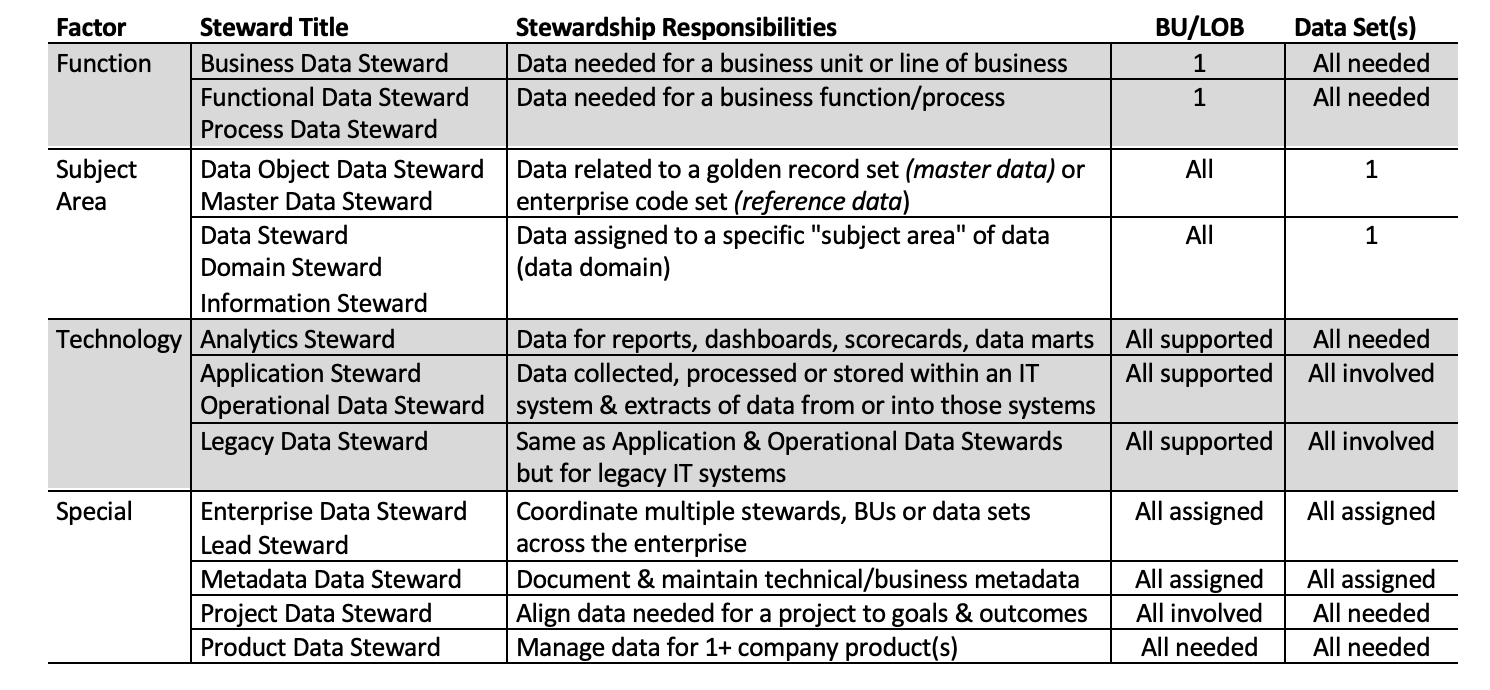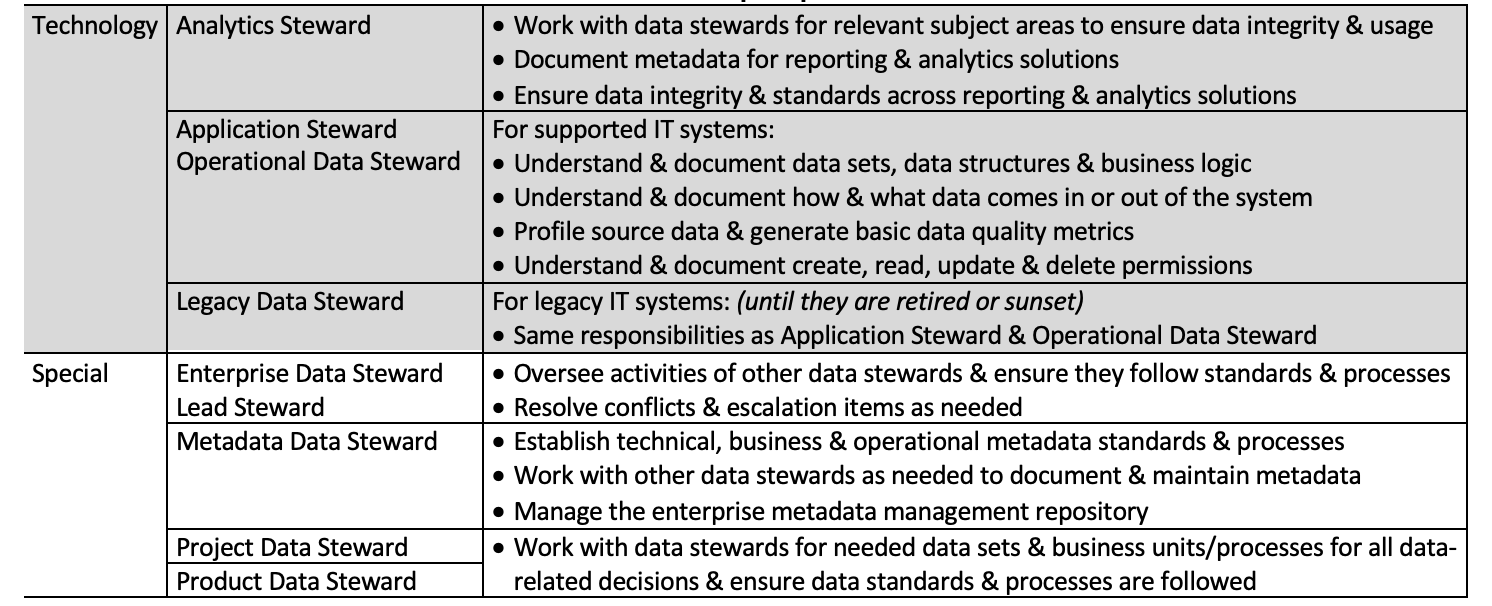
Stewardship is one of the foundational components of a successful data governance (DG) program but it can also be one of the more confusing areas of DG to understand. A search of available content about stewardship or stewardship roles will show a variety of definitions, titles and responsibilities – some seemingly overlapping or even conflicting with each other.
So… how do we make sense of all that?
Publisher’s note: This quarter’s DGPO column was written by Jimm Johnson.
Let’s boil it all down to four key questions. Once you understand the answers to these questions, you’ll be able to decide which style of stewardship best fits your organizational culture or DG program:
- What is Stewardship? (Definition)
- Who does Stewardship? (Roles)
- How does Stewardship function? (Responsibilities)
- Why does Stewardship matter? (Purpose)
What is Stewardship? (Definition)
Let’s start from a formal point of reference by comparing the definitions of stewardship and steward (as nouns) from two well-known dictionaries:
| Merriam-Webster.com | Dictionary.com |
| Stewardship[1] noun 1: the office, duties, and obligations of a steward; 2: the conducting, supervising, or managing of something Especially : the careful and responsible management of something entrusted to one’s care // stewardship of natural resources | Stewardship[2] noun 1: the position and duties of a steward, a person who acts as the surrogate of another or others, especially by managing property, financial affairs, an estate, etc. 2: the responsible overseeing and protection of something considered worth caring for and preserving: New regulatory changes will result in better stewardship of lands that are crucial for open space and wildlife habitat. |
| Steward[3] noun 1-4 omitted* 5: one who actively directs affairs : manager | Steward[4] noun 1: a person who manages another’s property or financial affairs; one who administers anything as the agent of another or others. 2-6 omitted* 7: a person appointed by an organization or group to supervise the affairs of that group at certain functions. 8 omitted* |
As you can see from these definitions, each term has a key concept:
- Stewardship = responsibilities for taking care of something of value
- Steward = person entrusted with stewardship
The other definitions for these terms omitted from the table above (but visible online) apply those same key concepts to different variations of (1) what is considered something of value (e.g., natural resources, household concerns, shops, money, food & drinks, travel experience, customer comfort, living quarters), and (2) the title given to the person entrusted with stewardship (e.g., shop steward, fiscal agent, flight attendant, petty officer).
What happens when something of value refers to data? The same key concepts still apply:
- Data Stewardship becomes the responsibilities for taking care of data – because DG formally establishes standards, roles, processes, and measures for managing data as something of value.
- Data Steward becomes the person responsible for data stewardship – because DG formally assigns them to data stewardship responsibilities for specific data.
All definitions of data stewardship and data stewards ultimately revolve around these two key concepts in some way. In the next two questions, we’ll dig deeper into the variety of data steward titles and responsibilities.
Who does Stewardship? (Roles)
Who are your data stewards? The short and easy answer is anyone who helps manage your organization’s data. Many roles across your organization touch data even if their HR titles and job descriptions don’t reflect that – so essentially, everyone is a data steward. But, are they really? The longer and more complicated answer is no, they’re not – unless they have been formally assignedto a data steward role by the DG program.
Most companies have many people across their organization informally managing data – they’re often known as subject matter experts (SME), analysts, leads, or those “go to” people who know a lot and can quickly provide answers when you need them (aka the “phone a friend” network). We all know at least one – and we also know we can rely on their answers and guidance, so these folks are a natural fit for data stewardship roles. Your DG program formalizes data stewardship by assigning employees to a specific data steward title with clearly defined responsibilities.
To accomplish that, you may need to designate different types of data stewards with different responsibilities depending on how they interact with or otherwise support the data needs of the organization. For example, IT staff often have more technical knowledge of IT systems and are better suited to documenting technical metadata and application business logic. Business or BIZ staff (not IT) often have more knowledge of business processes and operational workflows and the data they use, so they are better suited to documenting business metadata, business terms, metrics, etc.
The variety of data steward titles seem to revolve four key factors that determine which data they help manage:
- Function – data for processes & workflows within a business unit (BU) or line of business (LOB)
- Subject Area – data related to a specific subject area (like in a library)
- Technology – data in an IT system
- Special – data for a specialized function, process or need
To see how the most common data steward titles (culled from online resources, IT vendors, data/DG consultants, data management & DG professional organizations, and peer DG practitioners across multiple industries) align to these four factors, let’s organize and matrix them:
Which data steward titles are used typically depends on whether specific data sets need attention, which human resources are available to help, or how mature your data governance program is. Don’t be afraid to try different options (keep what works, abandon what doesn’t) or learn from others (what worked, what didn’t work). Just remember that good data stewardship requires clearly defined responsibilities so they know what is expected of them and enterprise-wide collaboration and cross-functional interaction between business and IT areas.
When you recruit data stewards, look for the following characteristics: (not listed in any order)
- Passionate about data
- Enterprise thinker (holistic view)
- Good oral & written communication skills
- Strong interpersonal & relationship skills
- Critical thinking & problem-solving skills
- Tenure and/or political capital
- Knowledge of company structure and who does what
- Knowledge about operational workflows and processes (business, IT or both)
- Awareness of upstream & downstream impact of data they use or create
- Ability to make decisions for the area(s) of the business they represent
- Appreciation for the challenges and benefits of change management
How does Stewardship function? (Responsibilities)
Data stewardship starts with clearly defined expectations and responsibilities around what data sets and activities fall within their purview. No matter where they are in the organization, your data stewards are responsible for managing data throughout its life cycle so that everyone in your organization benefits from the best possible data for decision making (typically, through reporting & analytics).
All data stewards share the following common responsibilities:
- Participate in data governance processes for data-related decision making
- Attend meetings to represent the integrity and needs of data they steward
- Understand and share knowledge about data sources, meaning, definition, context, etc.
- Document & maintain metadata and business glossary terms
- Define rules & metrics for assessing data quality and processes for resolving data quality issues
- Explain variation in values across data sources or between data quality rules vs. results
- Establish guidelines for data security, distribution, and usage
- Follow data change management processes defined by the data governance program
- Identify and work with other data stewards across the organization to coordinate these activities
Beyond these duties, your data stewards may have additional responsibilities as well depending on which function (discussed in Question 2) aligns to their role:
In sum, data stewards serve as subject matter experts (SMEs) across the enterprise for the data they steward and evangelize the benefits of data stewardship as a core business function that helps everyone. Be sure to continue working with your data stewards to foster cross-functional collaboration and keep the lines of communication open between your stewardship community and your stakeholders (using performance metrics, progress reports, success stories, etc.) to keep everyone is in the loop on the value your data stewards create.
Why does Stewardship matter? (Value)
Before we talk about value, let’s imagine a world without data stewards or data stewardship activities:
- How do you find the data you need?
- How do you determine how data is defined and what it means?
- How do you verify data definitions and metric algorithms?
- How do you know which data to use for which purpose?
- How do you determine how “good” your data is?
- How do you know which data to trust?
Getting these answers would be like trying to use a library with no identified library staff, no card catalog and no signage. Or using Amazon or eBay with no search function, filters, product descriptions, seller contact details, user ratings/comments, or other information provided to consumers. You’d have to ask other folks at the library or on those websites for help. At your company, you’d most likely engage the “phone a friend” network – or maybe email or hallway conversations instead (even slower!), or perhaps even instant messaging if your company offers it. All these approaches are time-consuming, involve other people (which increases the labor hit), and are not the most efficient, effective, accurate, or risk-free way to get data answers.
Data stewardship overcomes those challenges by:
- Establishing formal roles and responsibilities for managing data
- Creating transparency around who is in these roles & what their responsibilities are
- Publishing this information in a central repository (typically a data catalog) accessible to everyone
- Allowing everyone to search on their own (via that central repository) for who stewards which data
- Less reconciliation of poor quality data or repeating analyses that stakeholders don’t trust (due to more consistency in data definitions & usage)
- Faster turnaround time for building or enhancing reporting & analytics solutions
All those benefits yield some degree of labor savings. They also contribute to the value of better decisions based on a higher level of trust in data managed by those data stewards, which is harder to measure. Other benefits include:
- Reduction or elimination of duplication & variation in processes, reports, analytics (often due to differences in data definitions or what “good data” means)
- Faster and more reliable impact analysis of data changes upstream or downstream (especially if using a data catalog)
- Faster ability to find the right data to support project needs
- Reduction in the cost of bad decisions
- Faster speed to market (based on having better data faster, to guide processes & decisions)
- Faster ability to find the right data to support & evaluate progress toward strategic goals
As data stewardship becomes a more integrated part of normal operations for business units across the organization, your company will undoubtedly see efficiency gains, streamlined communication, and more confident decision making – all of which may contribute to increased revenue, decreased costs, and mitigated risks.
Best Practices
If you’re looking for some proven tips based on experience across industries and organizations, the Data Governance Professionals Organization (DGPO) offers guidance and best practices for each of the six categories in their Data Governance Best Practices Framework – including Stewardship – that you may find helpful along your journey.
Some of their tips for Stewardship include:[5]
- Identify people that everyone goes to for help to be a data steward.
- You will need both Business and IT Data Stewards.
- Stewardship must be consistently cultivated over time.
- Utilize the collective knowledge of all parties.
For more details about the these tips or the DGPO and its framework, please visit the DGPO website to learn more about this professional organization and consider joining their mailing list, becoming a member (for access to more expertise, case studies, and additional content) or registering for an upcoming event.
And remember that your data stewards – in whichever role
they are placed – are the backbone of your data governance program. Find them, cultivate
them, enable them, and help them optimize the consistency, integrity, quality
and trust of your data so your organizational leaders and employees all have
the best data (and data SMEs!) available to them.
CITATIONS:
[1] Merriam Webster. “Stewardship.” M-W.com. Web. 15 Mar 2020. <https://www.merriam-webster.com/dictionary/stewardship>.
[2] Dictionary.com. “Stewardship.” Dictionary.com. Web. 15 Mar 2020. <https://www.dictionary.com/browse/stewardship#>.
[3] Merriam-Webster. “Steward.” M-W.com. Web. 15 Mar 2020. <https://www.merriam-webster.com/dictionary/steward>.
[4] Dictionary.com. “Steward.” Dictionary.com. Web. 15 Mar 2020. <https://www.dictionary.com/browse/steward#>.
[5] Data Governance Professionals Organization. “DGPO Best Practices Categories: Stewardship.” (Members Only Area). DGPO.com. 15 Mar 2020. <https://dgpo.org>.



